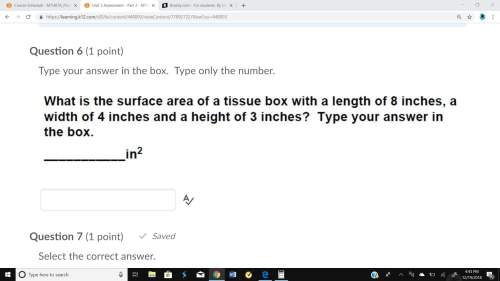
Mathematics, 07.12.2019 02:31 mtunes
An urn contains two unpainted balls at present. we choose a ball at random and flip a coin. if the chosen ball is unpainted and the coin comes up heads, we paint the chosen unpainted ball red; if the chosen ball is unpainted and the coin comes up tails, we paint the chosen unpainted ball black. if the ball has already been painted, then (whether heads or tails has been tossed) we change the color of the ball (from red to black or from black to red). to model this situation as a stochastic process, we define time t to be the time after the coin has been flipped for the tth time and the chosen ball has been painted. the state at any time may be described by the vector [u r b], where u is the number of un-painted balls in the urn, r is the number of red balls in the urn, and b is the number of black balls in the urn. we are given that x0 = [2 0 0]. after the first coin toss, one ball will have been painted either red or black, and the state will be either [1 1 0] or [1 0 1]. hence, we can be sure that x1 = [1 1 0] or x1 = [1 0 1]. clearly, there must be some sort of relation between the xt’s. for example, if xt = [0 2 0], we can be sure that xt+1 will be [0 1 1]. determine the following n-step transition probabilities:
a) after two balls are painted, what is the probability that the state is [0 2 0]?
b) after three balls are painted, what is the probability that the state is [0 1 1]?

Answers: 3
Another question on Mathematics

Mathematics, 21.06.2019 14:30
Atoy company is considering a cube or sphere-shaped container for packaging a new product. the height of the cube would equal the diameter of the sphere . compare the volume to surface area ratios of the containers. which packaging will be more efficient? for a sphere, sa =4πr²
Answers: 1

Mathematics, 21.06.2019 18:30
Apsychology student wishes to investigate differences in political opinions between business majors and political science majors at her college. she randomly selects 100 students from the 260 business majors and 100 students from the 180 political science majors. does this sampling plan result in a simple random sample? why or why not? no, because each group of 200 students in the sample does not have the same chance of being selected. yes, because each group of 200 students in the sample has the same chance of being selected. no, because each individual student does not have an equal chance of being selected. yes, because each individual student has the same chance of being selected.
Answers: 1

Mathematics, 21.06.2019 18:30
The volume of a sphere is increased by 6%. calculate the corresponding percentage increased in it area.
Answers: 3

Mathematics, 21.06.2019 21:40
Write the contrapositive of the conditional statement. determine whether the contrapositive is true or false. if it is false, find a counterexample. a converse statement is formed by exchanging the hypothesis and conclusion of the conditional. a) a non-converse statement is not formed by exchanging the hypothesis and conclusion of the conditional. true b) a statement not formed by exchanging the hypothesis and conclusion of the conditional is a converse statement. false; an inverse statement is not formed by exchanging the hypothesis and conclusion of the conditional. c) a non-converse statement is formed by exchanging the hypothesis and conclusion of the conditional. false; an inverse statement is formed by negating both the hypothesis and conclusion of the conditional. d) a statement not formed by exchanging the hypothesis and conclusion of the conditional is not a converse statement. true
Answers: 1
You know the right answer?
An urn contains two unpainted balls at present. we choose a ball at random and flip a coin. if the ch...
Questions


Biology, 26.03.2021 21:20

Mathematics, 26.03.2021 21:20

Social Studies, 26.03.2021 21:20

Mathematics, 26.03.2021 21:20


Mathematics, 26.03.2021 21:20

Mathematics, 26.03.2021 21:20

Mathematics, 26.03.2021 21:20



Mathematics, 26.03.2021 21:20



Mathematics, 26.03.2021 21:20

Chemistry, 26.03.2021 21:20







